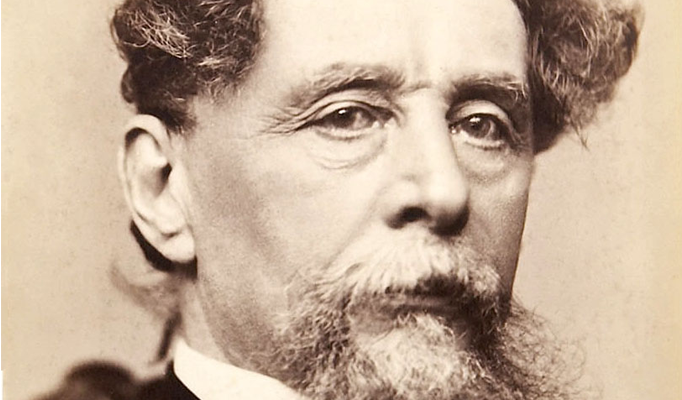
Idealistic and Scrooge-like
At a recent birthday party, I had the joy of meeting a fellow UBC School of Social Work alumni, whom I had not seen since our 1976 graduation. As we renewed our friendship, he gave me a Charles Dickens biography as a Christmas present. This sent me to our local library to get out numerous Dickens books, biographies and movies. Dickens was perhaps the first true celebrity in the modern sense. While many of us love the beauty of Shakespeare, Dickens remains more accessible to most English-speaking people.
Why have Dickens’ books continued to speak to us 150 years later? Perhaps it is because of Dickens’ suffering in his painful childhood. His parents moved more than 20 times in 18 years. Since Dickens’ father was sent to debtors’ prison and Charles Dickens to a blacking factory, he was able to tell compelling stories of degradation and abuse. The average Londoner in the 1840s died by age 27, with almost half of the deaths being children under the age of 10. Dickens was deeply disturbed by the poverty, hunger, and ignorance, as well as by the indifference of the rich and powerful to the widespread suffering. George Bernard Shaw said that Dickens’ book Little Dorritt is more seditious than Karl Marx’s Das Kapital.
The ideals of family life and generosity to the poor in Dickens’ classic A Christmas Carol continue to strike a chord today with countless millions. Dickens, like many of us, was at his best at Christmas, letting down his hair, resting from his frenetic writing, and enjoying the warmth of family and good food. Dickens had a very deep faith in the Christ of Christmas. The last Dickens book The Life of Our Lord was published posthumously 85 years later. Written for his 10 children, it shows both his love for Jesus and one’s neighbours: “My dear children, I am very anxious that you should know something about the History of Jesus Christ. For everybody ought to know about Him. No one ever lived, who was so good, so kind, so gentle, and so sorry for all people who did wrong, or were in anyway ill or miserable, as he was.”
Despite his high ideals, Dickens was often tempted to be a Scrooge. The financial pressure was enormous and unrelenting. With little initial profit from A Christmas Carol, Dickens wrote: “I shall be ruined beyond all mortal hope of redemption.” Fortunately for Dickens, Americans turned A Christmas Carol into a bestseller. Dickens visited the United States twice, both times being treated like a Hollywood superstar, even being chased by paparazzi.
Marrying on the rebound, Dickens chose a wife to whom he was not romantically attracted. Catherine Hogarth Dickens did not live up to his fictional ideals of women who were perpetually young, attractive, thin, and emotionally passionate. While she loved being at home looking after her large family, he wanted to be on the go, particularly abroad. The more anxious Dickens became, the faster he went and the slower Catherine went. Before he developed painful gout, he would walk 12 miles every night. It was his way of both de-escalating and carefully observing his environment for new book material. Dickens commented: “If I couldn’t walk fast and far, I should just explode and perish.”
Sadly, after a marital conflict, Dickens had a partition built in their bedroom, cutting himself off from his wife. Rather than celebrate his wife’s very different personality, he resented her for not being just like himself: “…nothing on earth could make her understand me, or suit us for each other. Her temperament will not go with mine…no one can help me.” Because he had never forgiven his mother for trying to send him back to the blacking factory, it poisoned his relations with his wife: “I never afterward forgot, I never shall forget, I never can forget, that my mother was warm for my being sent back.” Bitterness betrays our highest ideals and turns us into Scrooges. Dickens, under pressure, portrayed himself as a victim, blaming others rather than owning his personal baggage. Remarkably his wife Catherine stayed loyal to her painful husband, going to productions of his work and keeping up with his publications even after the divorce. In the midst of his rejecting his wife, many friendships were cut off, publishers fired, theatricals ended, family vacations ceased, and his charitable work with heiress Angela Burdett-Coutts brought to an end. The breakup of Dickens’ marriage and the secret infatuation that he had with Nelly Ternan wore Dickens out. In the last part of his life, he was as sick as his secrets, exhausted by his cover-ups. Despite Dickens’ tragic male/female relationships, his unforgettable vision for a better society still speaks to us in the early 21st Century.

Leave a Reply